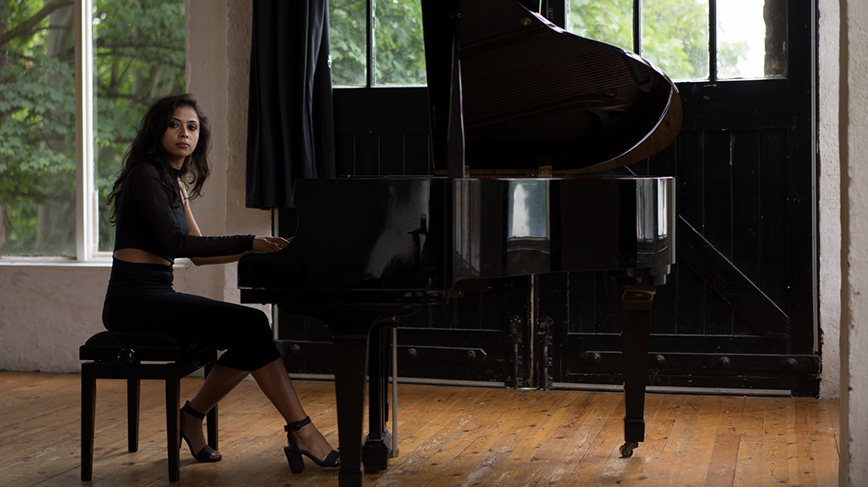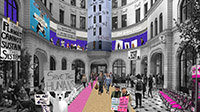'Adventure and transformation' followed alum's architecture studies

Faria Ibrahim started her MSc in urban planning and design in 2008, just as the global financial crisis brought new construction starts to a virtual halt, and opportunities for young architects became hard to find. But fortunately for Ibrahim, she was in the right place at the right time—and she put her creative streak to work.
“I have a passion for creating new and innovative things—that’s what led me to the architecture path,” Ibrahim says.
Ibrahim’s creative restlessness runs deep: she’s also an accomplished singer, pianist, performer and visual artist, who is making a name for herself—as “Farja”—not only in her native Bangladesh, but in London and New York.
From architecture, Ibrahim pivoted to the urban planning and design program master’s programme. “I wanted to focus on how cities are created, how towns are planned, how the whole system works.”
But a serious ski accident made sure she would be sidelined for a while. Ibrahim recalls it as a dark and lonely period. But she also remembers that during her convalescence, a brain wave came to her, suddenly and out of nowhere. It was undefined, although it had a name: Studio Farja.
“I didn’t have an idea worked out, but I held onto it. I kept it in the back of my mind.”
Introduced to KTH Innovation and startup scene
As her injuries healed and she gathered her strength, Ibrahim started to make connections in what she calls “the startup environment at KTH.” Many of her new friends were ICT students at KTH who were launching businesses of their own with the support of the KTH Innovation preincubator programme.
“It was such an exciting time. Everyone was talking about entrepreneurship and innovation—it was all around me, she says.”
“This idea of being your own boss, of conceiving an idea and working with creative people to bring it to life—that was something I started to think about: Can I launch my own startup? Can I have something of my own?”
Self-employment came quickly. Through her own networking at a KTH event, she landed a client who wanted architectural drawings for sustainable mobile homes. Studio Farja was born, but it soon began to evolve further—first because Ibrahim’s client discovered that she was also a lifelong artist and painter so he commissioned her to create some new artwork for him.
From physical environment to virtual
At that same time, her husband—an IT solutions architect—encouraged her to explore the world of user experience (UX) design.
“I love architecture, I love structures. But I felt there was more than just that. In the process I also met people from human-computer interaction. I kind of broke off from architecture and I got introduced to UX design,” she says.
“It’s not just building houses, you’re solving different problems for people. Once I got into that I found it very interesting and engaging. You get to work in multiple fields for multiple needs.”
Today, in between concert performances and gallery shows, she and her husband split their time between his native Poland, the UK and Spain—and Studio Farja follows wherever they go: serving UX clients, collaborating with other musicians in the studio and on stage, and producing art exhibitions.
“You could say I transitioned from physical design to the virtual world,” she says. “I build apps, but I build in time to paint, perform, to collaborate with other artists. It’s been quite an adventure – and a constant transformation.”
David Callahan


